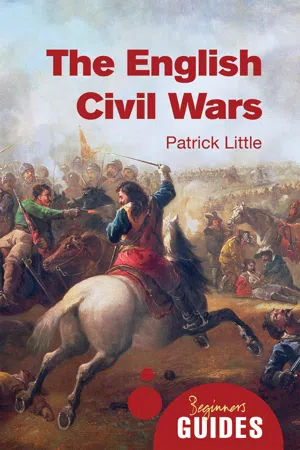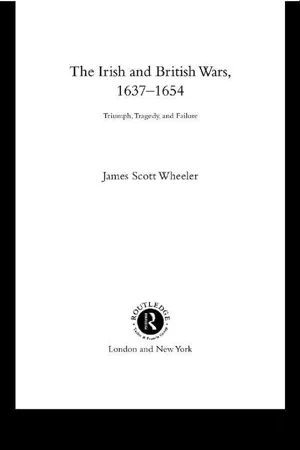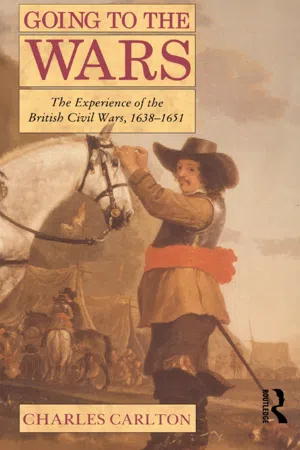History
Battle of Worcester
The Battle of Worcester took place on September 3, 1651, during the English Civil War. It was the final battle of the war, resulting in a decisive victory for the Parliamentarian forces led by Oliver Cromwell over the Royalist army of King Charles II. The defeat led to the end of the Royalist cause and the exile of Charles II.
Written by Perlego with AI-assistance
Related key terms
3 Key excerpts on "Battle of Worcester"
- eBook - ePub
The English Civil Wars
A Beginner's Guide
- Patrick Little(Author)
- 2014(Publication Date)
- Oneworld Publications(Publisher)
When it at last came, the attack was led by a trusted lieutenant, Charles Fleetwood, who forced the Scots out of the village of Powick and pushed them back into the city. Immediately afterwards, two more of Cromwell’s protégés, John Lambert and Thomas Harrison, staunchly resisted a desperate attack from the Scots, sallying from the western gate of the city – an attack that crumbled when Cromwell led his reserve into their flank. The defeated forces fled back into the suburbs; Fort Royal was taken; and soon the New Model Army was within the city walls. In the ensuing chaos, the duke of Hamilton was mortally wounded, David Leslie reputedly ‘rode up and down as one amazed, or seeking to fly he knew not whither’, and Charles II managed to escape with some of the cavalry. As many as three thousand Scots lay dead; a further seven thousand were taken prisoner. The royalist cause had been completely destroyed.A SCOTTISH REACTION TO NEWS OF THE Battle of Worcester, SEPTEMBER 1651I heard the king and 3,000 horse was taken, as we had heard before of the duke of Hamilton and [earl of] Rothes and 7,000 prisoners. I remembered that I said often…that if they let the king go in the head of the army, his head, I feared, would go with it.This night we heard again of 10,000 prisoners, 647 officers, all their colours, bag and baggage and [artillery] train taken, which is a strange thing to think upon; and it is as strange, if it be true, what some report– that they will bring king and lords to Scotland, there to be executed.Source: Diary of Sir Archibald Johnston of Wariston, volume ii, 1650 –4 , ed. D.H. Fleming (Edinburgh, 1919), 135 –6.The parliamentarians were elated by the victory. Remembering that the first skirmish of the civil wars had happened at Powick Bridge on 23 September 1642, the New Model Army chaplain, Hugh Peter, gave an almost Shakespearean oration to the militia regiments immediately after Worcester: ‘when your wives and children shall ask you where you have been, and what news; say you have been at Worcester, where England’s sorrows began, and where they are happily ended’.Aftermath
The defeat of Charles II at Worcester may have brought the civil wars to an end, but it did not solve the problems of mid-seventeenth-century England. Oliver Cromwell was now the most powerful figure in the country, but he was not able to implement a radical reform programme because of resistance from the mainly conservative MPs in the Rump Parliament. When Cromwell returned to London after Worcester, there were high hopes that something truly revolutionary might be about to happen. Cromwell himself had written to Parliament, immediately after the battle, that God had shown his favour to ‘the nation and the change of government’, and now expected that ‘justice and righteousness, mercy and truth may flow from you, as a thankful return to our gracious God’. - eBook - ePub
The Irish and British Wars, 1637-1654
Triumph, Tragedy, and Failure
- James Scott Wheeler(Author)
- 2003(Publication Date)
- Routledge(Publisher)
45 The council agreed with Rupert and decided to launch the main attack with five columns against the forts on the west side. Maurice was to lead a supporting attack against the defenses on the east side of the city. Although the attacks were scheduled to commence at daybreak, 26 July, Hopton’s Cornishmen jumped the start, assailing their objectives at 3 a.m. Rupert, hearing their gunfire, ordered an assault by the three brigades of infantry on the north and west of the city.The defenders fought hard to prevent the royalists from breaching their works, and for the first few hours repulsed every assault. However, Wentworth s brigade of royalist infantry found a gap in the western defenses and opened a breach. Rupert reacted to this success by ordering all reserves to be thrown through the breach and toward the city’s inner defenses. The defenders were too few to eject the royalists and, after several hours of hand-to-hand fighting, Fiennes determined that further resistance was futile. Fiennes surrendered on lenient terms, giving the king possession of the greatest prize he had yet received from his military efforts. Charles paid dearly for this triumph, losing as many as 500 men killed, including many important officers.46The day after the assault on Bristol a battle was fought near Gainsborough, in Lincolnshire, between a Roundhead force of 1,800 cavalrymen, led by Sir John Meldrum and Colonel Oliver Cromwell, and about 2,000 royalist cavalry led by Charles, Lord Cavendish, Newcastle’s younger brother. The parliamentarians won the encounter, driving the royalists from the field and killing Cavendish and a number of his troopers. The battle was not decisive and Newcastle’s main army drove the parliamentary force away from Gainsborough and captured that town three days later.47 - eBook - ePub
Going to the Wars
The Experience of the British Civil Wars 1638-1651
- Charles Carlton(Author)
- 2002(Publication Date)
- Routledge(Publisher)
9While men in battle may behave as if they have lost their sanity, battles themselves are usually fought for rational objectives. For instance, that of Edgehill was to capture London, of Marston Moor to control the North, of Naseby to threaten East Anglia. But battles amount to much more than the taking or preservation of territory, and the killing and wounding of enemy soldiers. Victory is not an end in itself: there are a lot of substitutes for victories that fail to destroy the enemy’s will to fight. The king’s greatest loss at Naseby was not just the five thousand troopers killed or taken (for he still had ten times as many soldiers serving in dispersed garrisons), but the capture of his private papers. When parliament published them, showing Charles’s duplicity, support for the king eroded far faster than on any field of battle.10While all wars are confused events, civil wars are especially chaotic—and those which afflicted the British Isles in the 1640s more than most. Although they started in 1638 with the First Bishops’ War, and ended in 1689 with the Glorious Revolution, in a sense at their central hub were the conflicts that took place in England between 1642 and 1646, that are known as the First English Civil War. In all these civil wars it was usually hard to tell one side from the other, for men rarely wore uniforms that defined their army. While in Scotland and Ireland, clan, ethnic or religious memberships might determine sides, in England (with the exception of Catholics fighting for the crown), things were far more complicated. Enemies often spoke the same language, sometimes the same dialect. Men frequently changed sides with a surprising ease that belies the view that the war was fought for clear-cut ideological reasons. Some counties were relatively peaceful: others, such as Nottinghamshire, were scenes of continuous fighting.
Learn about this page
Index pages curate the most relevant extracts from our library of academic textbooks. They’ve been created using an in-house natural language model (NLM), each adding context and meaning to key research topics.


